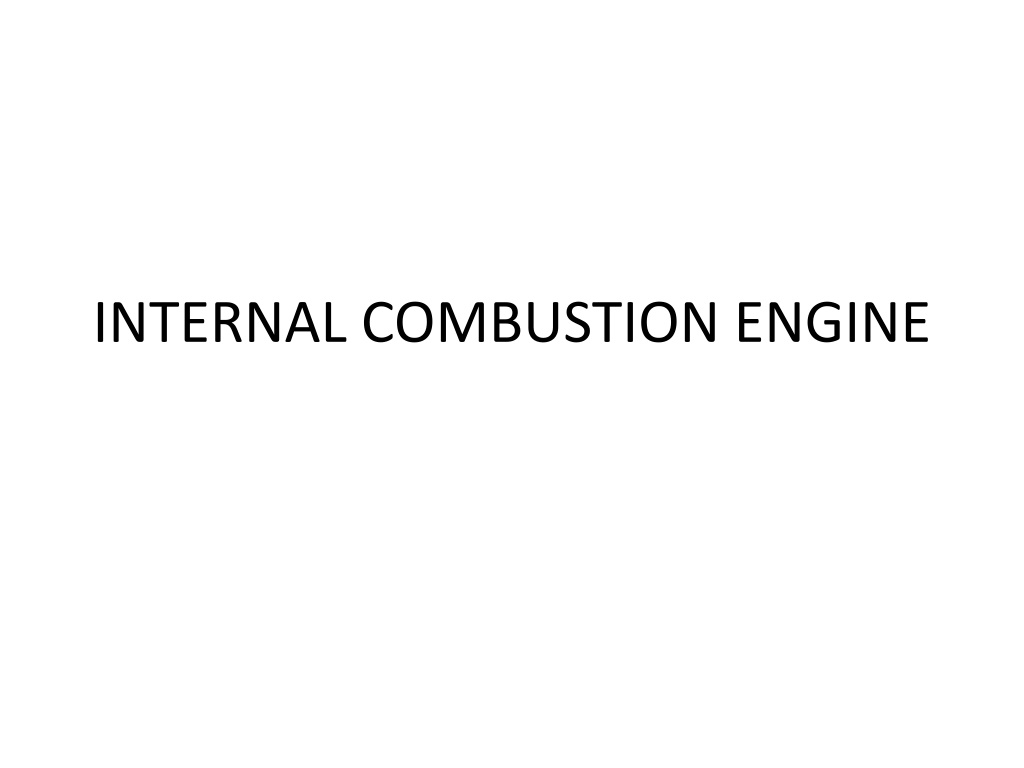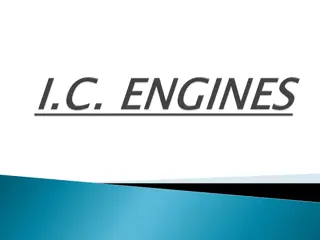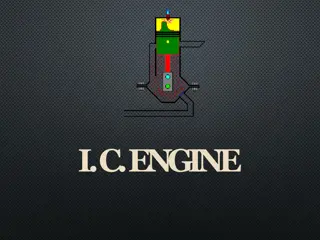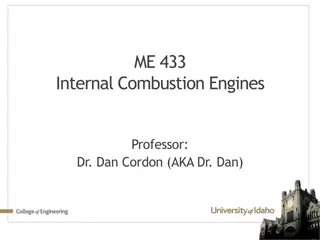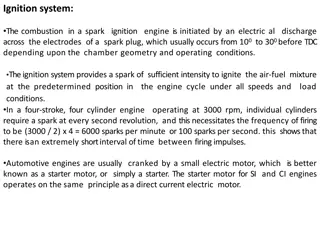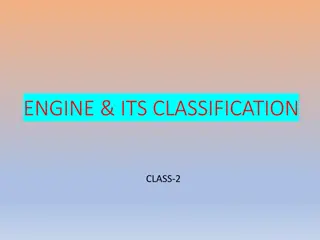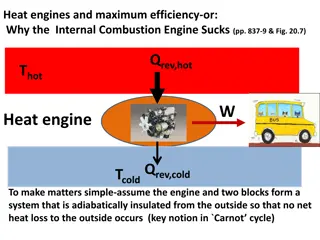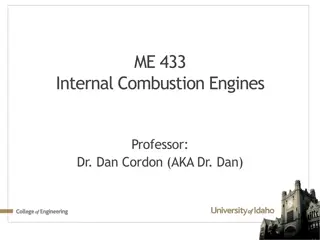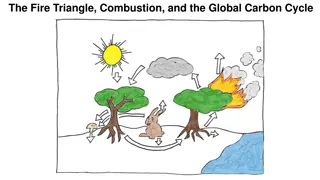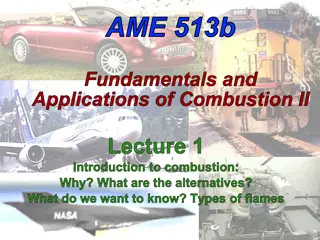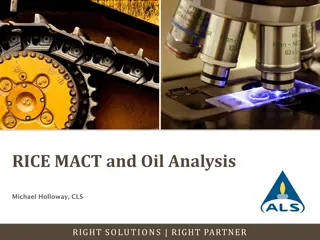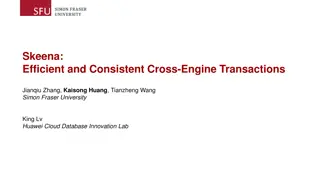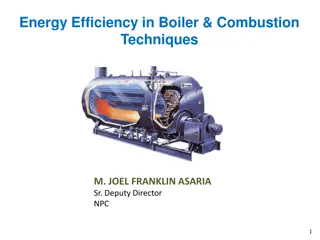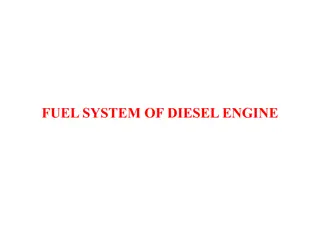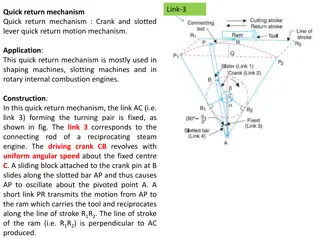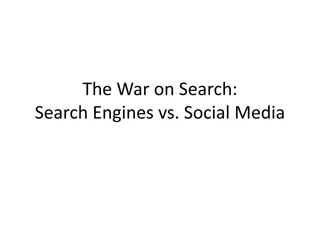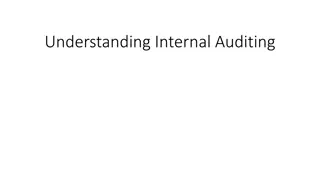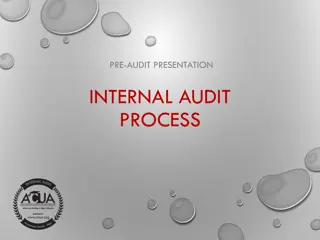Understanding the Components and Operation of Internal Combustion Engines
Dive into the world of internal combustion engines through a detailed exploration of their classification, key components like cylinders, pistons, crankshafts, and crankcases, as well as the operational principles of four-stroke engines. Discover how these engines work, their construction, and the role of each component in powering various vehicles and machinery.
Download Presentation

Please find below an Image/Link to download the presentation.
The content on the website is provided AS IS for your information and personal use only. It may not be sold, licensed, or shared on other websites without obtaining consent from the author. Download presentation by click this link. If you encounter any issues during the download, it is possible that the publisher has removed the file from their server.
E N D
Presentation Transcript
CASSIFICATION OF IC ENGINE 1. Type of Fuel 2. Method of ignition 3. Number of storkes 4. Cycle of operation 5. Speed of engine 6. Cooling system 7. Number of cylinders
Components of IC Engine 1. Cylinder : withstand 50 bar pressure and 2000 centigrade temperature. Material : cast iron , steel alloy , aluminium alloy 2. Cylinder Head : Contain Spark plug for petrol engine and nozzle for Diesel Engine. Material : cast iron , steel alloy , aluminium alloy Gasket : copper or asbestos for air tight seal.
Components of IC Engine 3. Piston : Function : Transmit force to connecting rod. Material : Aluminium 4. Connecting rod : Function : Transmit force from piston to crankshaft Material : Special steel alloy or Aluminium alloy
Components of IC Engine 5. Piston rings : Construction : Two sets of rings Function : To provide air tight seal to prevent leakage of burnt gases or oil Material : Special steel alloy. 6. Crankshaft : Power is developed during working stroke. Material : Special steel alloy.
Components of IC Engine 7. Crankcase : Act as a sump for lubricating oil. Material : cast iron 8. Flywheel : Function : It stores excess energy during power stroke and return energy during other stroke It maintain the speed of crankshaft constant.
Four stroke Engine Petrol or Spark Ignition Engine ( S.I. Engine )
Construction 1. It consists of Cylinder piston assembly Connecting rod Crankshaft Cylinder head Crank case Inlet and Exhaust valve. Fins ( for cooling purpose )
Working 1. Suction stroke : Due to pressure difference inlet valve opens and charge is sucked into the cylinder Piston moves from TDC to BDC. Crankshaft rotates through 180 degree. 2. Compression stroke : Inlet and Exhaust valve are closed Piston moves from BDC to TDC.
Working Pressure and temperature of charge increases. Crankshaft rotates through 360 degree i.e. one complete revolution. 3. Expansion stroke : Charge is ignited by spark plug before the piston reaches TDC. Sudden increase in the temperature and pressure but volume remains constant.
Working Combustion products pushes the piston in the downward direction due to high pressure. Heat energy transform to mechanical energy. Piston moves from TDC to BDC Crankshaft rotates through 540 degree. Both inlet and exhaust valves are closed. 4. Exhaust stroke : Exhaust valve opens as the piston moves from BDC to TDC
Working Piston pushes the product of combustion through exhaust valve into atmosphere. Examples of Four stroke engines: For Light vehicles: Cars Jeep Aeroplanes.
Four stroke Engine Diesel or Compression Ignition ( C.I. Engine )
Construction 1. It consists of Cylinder piston assembly Connecting rod Crankshaft Cylinder head Crank case Inlet and Exhaust valve. Fins ( for cooling purpose )
Working 1. Suction stroke : Due to pressure difference inlet valve opens and air is sucked into the cylinder Piston moves from TDC to BDC. Crankshaft rotates through 180 degree. 2. Compression stroke : Inlet and Exhaust valve are closed Piston moves from BDC to TDC.
Working Pressure and temperature of charge increases. Crankshaft rotates through 360 degree i.e. one complete revolution. 3. Expansion stroke : Fuel is injected through fuel injector before the piston reaches TDC. Temperature of air is high enough to ignite the Fuel. Sudden increase in the temp. and pressure.
Working Combustion products pushes the piston in the downward direction due to high pressure. Heat energy transform to mechanical energy. Piston moves from TDC to BDC Crankshaft rotates through 540 degree. Both inlet and exhaust valves are closed. 4. Exhaust stroke : Exhaust valve opens as the piston moves from BDC to TDC
Working Piston pushes the product of combustion through exhaust valve into atmosphere. Examples of Four stroke engines: For Heavy vehicles: Buses Trucks Tractors. Earth moving machines.
Valve Timing Diagram Petrol & Diesel Engine
Four stroke Petrol Engine 1. IVO : 10 to 20 Deg. Before TDC 2. IVC : 30 to 40 Deg. After BDC 3. IGN : 20 to 30 Deg. Before TDC 4. EVO : 30 to 50 Deg. Before TDC 5. EVC : 10 to 15 Deg. After TDC
Four stroke Diesel cycle 1. IVO : 10 to 20 Deg. Before TDC 2. IVC : 25 to 40 Deg. After BDC 3. FVO : 10 to 15 Deg. Before TDC 4. FVO : 15 to 20 Deg. After TDC 5. EVO : 39 to 50 Deg. Before TDC 6. EVC : 10 to 15 Deg. After TDC
Two stroke Petrol engine 1. EPO : 35 to 50 Deg. before BDC 2. TPO : 30 to 40 Deg. before BDC 3. TPC : 30 to 40Deg. after BDC 4. EPC : 35 to 50 Deg. after BDC 5. IGN : 15 to 20 Deg. before TDC
Two stroke Diesel engine 1. EPO : 30 to 45 Deg. before BDC 2. TPO : 30 to 40 Deg. before BDC 3. TPC : 30 to 40 Deg. after BDC 4. EPC : 35 to 50 Deg. after BDC 5. FVO : 10 to 15 Deg. before TDC 6. FVO : 15 to 20 Deg. After TDC
SI Spark ignition,CI compression Ignition, HCCI Homogeneous charge compression ignition
Combustion phenomenon in SI engine In SI Engine homogeneous mixture of air and fuel is formed by the carburetor. Air fuel mixture is compressed upto compression ratio 8 to 12. Mixture is ignited by spark plug. A turbulent flame is developed which propagates through the charge.
Three stages of combustion 1. Ignition Lag : It consists of growth and development of propagated flame. It depends on temperature,pressure and nature of fuel. It also depends on propagation of exhaust gas residue. 2. Propagation of flame : In this stage there is sudden rise in pressure and temperature.
Velocity of flame is constant. Heat release rate depends on reaction rate of charge. heat transfer to cylinder wall is low. 3. After burning : In this stage highest pressure is reached. Velocity of flame decrease. Combustion rate also decrease.
SI Spark ignition,CI compression Ignition, HCCI Homogeneous charge compression ignition
Combustion phenomenon in SI engine In SI Engine homogeneous mixture of air and fuel is formed by the carburetor. Air fuel mixture is compressed upto compression ratio 8 to 12. Mixture is ignited by spark plug. A turbulent flame is developed which propagates through the charge.
Three stages of combustion 1. Ignition Lag : It consists of growth and development of propagated flame. It depends on temperature,pressure and nature of fuel. It also depends on propagation of exhaust gas residue. 2. Propagation of flame : In this stage there is sudden rise in pressure and temperature.
Velocity of flame is constant. Heat release rate depends on reaction rate of charge. heat transfer to cylinder wall is low. 3. After burning : In this stage highest pressure is reached. Velocity of flame decrease. Combustion rate also decrease.
